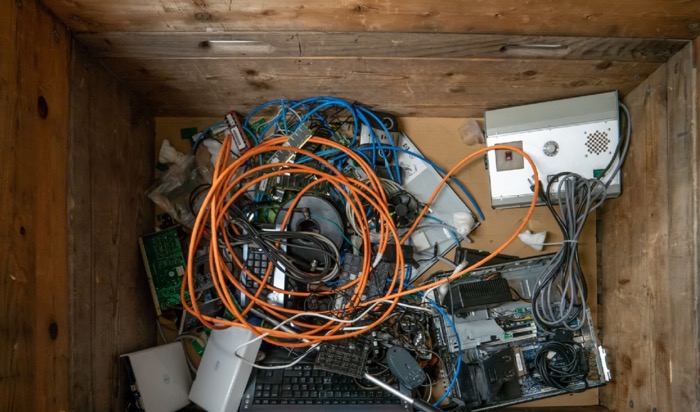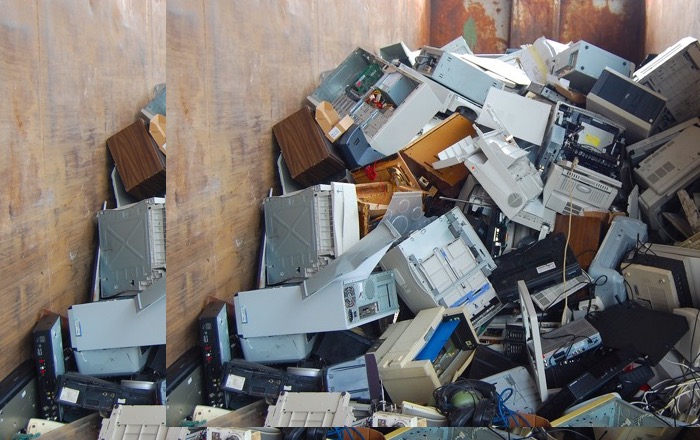Digital pollution refers to the negative impact of digital technology on the environment and society. It can take many forms, including electronic waste, data centers that consume large amounts of energy, and the carbon emissions associated with the production and use of digital devices.
One aspect of digital pollution is electronic waste, or e-waste, which refers to discarded electronic devices such as computers, cell phones, and televisions.
This type of E-waste can be harmful to the environment if it is not properly disposed of, as it can contain hazardous materials such as lead, mercury, and cadmium. These materials can leach into the soil and water, causing pollution and potentially affecting human health.
Another aspect of digital pollution is the energy consumption of data centers, which are facilities that store and process large amounts of data. Data centers require significant amounts of electricity to operate, and their energy consumption has been increasing as the amount of data being stored and processed continues to grow. This can contribute to carbon emissions and contribute to climate change.

Finally, the production and use of digital devices can also contribute to digital pollution through the emission of greenhouse gases during the manufacturing process and the energy consumption of the devices themselves.
Digital pollution is an important environmental and societal issue that needs to be addressed to ensure the sustainability of our digital technologies.
Digital Pollution by Watching YouTube Video?

I was curious about know how much of digital pollution can be caused by watching a YouTube video, since it is being Watched on a mobile phone, that runs on battery, and requires internet that reached my home via cable and then Wi-Fi, and then the data being streaming on my mobile phone is saved in another part of the world. And so on.
I found a study by the Carbon Trust. It found that streaming a high-definition video on YouTube can produce up to 0.57 grams of CO2 equivalent emissions per minute. This means that a 10-minute video can produce around 5.7 grams of CO2 equivalent emissions.
How to Solve the issues of Digital Pollution?
There are several startups that are working on solving the issue of digital pollution, which is the environmental impact of the digital industry. Some of these startups include:
OneCarbon
This startup provides a platform for measuring and reducing carbon footprints in the digital industry. Their solution uses artificial intelligence to analyze the environmental impact of digital services and provide recommendations for reducing carbon emissions.
Echogen
Echogen is developing a technology to reduce the energy consumption of data centers, which are a significant contributor to carbon emissions. Their solution uses waste heat to generate electricity, reducing the amount of energy required to power data centers.
CarbonCure
This startup is working on a solution to reduce the carbon footprint of the cement industry, which is a significant contributor to greenhouse gas emissions. Their technology injects carbon dioxide into cement, making it stronger and reducing the amount of cement required for construction.
Energy Vault
Energy Vault is developing a solution to store renewable energy using gravity. Their technology uses concrete blocks to store energy, reducing the need for battery storage and the associated environmental impact.
These are just a few examples of startups that are working on solving the issue of digital pollution. As awareness of this issue grows, it is likely that we will see more startups developing innovative solutions to reduce the environmental impact of the digital industry.
What Can We do to keep it in Check?
There is a lot and individual can do to keep digital pollution issue in check. Since everything we do on our devices whether it is online or offline it is creating digital pollution so simply being mindful of what device we are using to how many times we are using it matters. Even uninstalling unused apps on your mobile phone will effect it.
Use energy-efficient devices
Energy-efficient devices can significantly reduce the amount of energy consumed by digital activities. Consider investing in energy-efficient devices that are designed to reduce power consumption and emissions.
Reduce data consumption
Streaming videos and music online can consume a lot of data and energy. Consider reducing your data consumption by streaming videos at a lower resolution, using audio-only mode on music streaming services, and limiting the amount of time you spend on digital activities.
Use renewable energy
Consider powering your digital activities using renewable energy sources such as solar, wind, or hydroelectric power. You can do this by installing solar panels, purchasing renewable energy credits, or switching to a green energy provider.
Recycle e-waste
Electronic waste (e-waste) can be a significant contributor to digital pollution. To reduce your impact, recycle your e-waste by properly disposing of old devices, batteries, and other electronic components.
Support eco-friendly tech companies
Support companies that are committed to reducing their environmental impact. Look for companies that use renewable energy, design energy-efficient products, and have a commitment to sustainability.
Conclusion
I hope this article gives you a fair idea of how we can help slow down the speed of piling up of electronic waste on our planet if not stop it completely.


